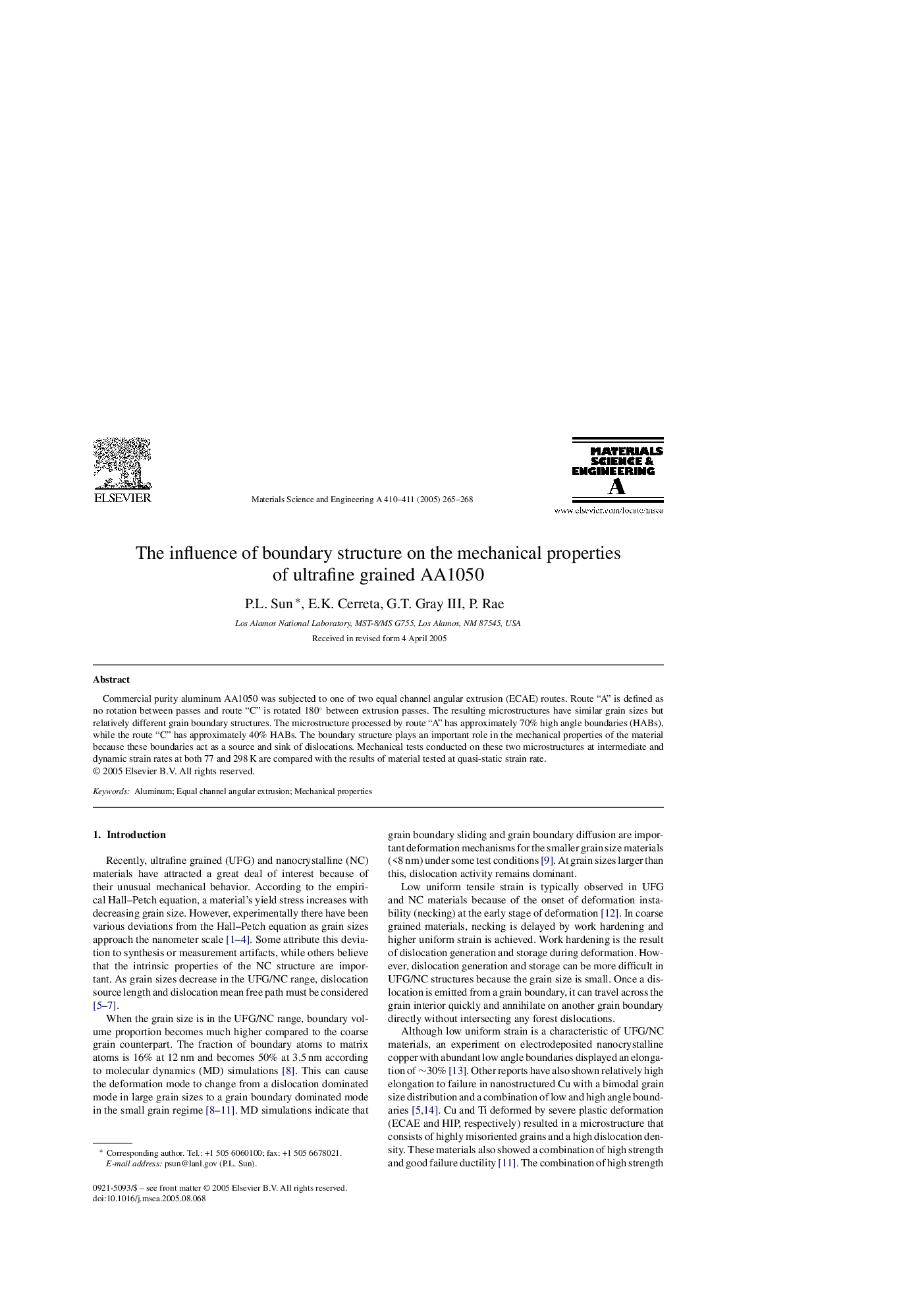| Article ID | Journal | Published Year | Pages | File Type |
|---|---|---|---|---|
| 9795651 | Materials Science and Engineering: A | 2005 | 4 Pages |
Abstract
Commercial purity aluminum AA1050 was subjected to one of two equal channel angular extrusion (ECAE) routes. Route “A” is defined as no rotation between passes and route “C” is rotated 180° between extrusion passes. The resulting microstructures have similar grain sizes but relatively different grain boundary structures. The microstructure processed by route “A” has approximately 70% high angle boundaries (HABs), while the route “C” has approximately 40% HABs. The boundary structure plays an important role in the mechanical properties of the material because these boundaries act as a source and sink of dislocations. Mechanical tests conducted on these two microstructures at intermediate and dynamic strain rates at both 77 and 298 K are compared with the results of material tested at quasi-static strain rate.
Related Topics
Physical Sciences and Engineering
Materials Science
Materials Science (General)
Authors
P.L. Sun, E.K. Cerreta, G.T. III, P. Rae,
